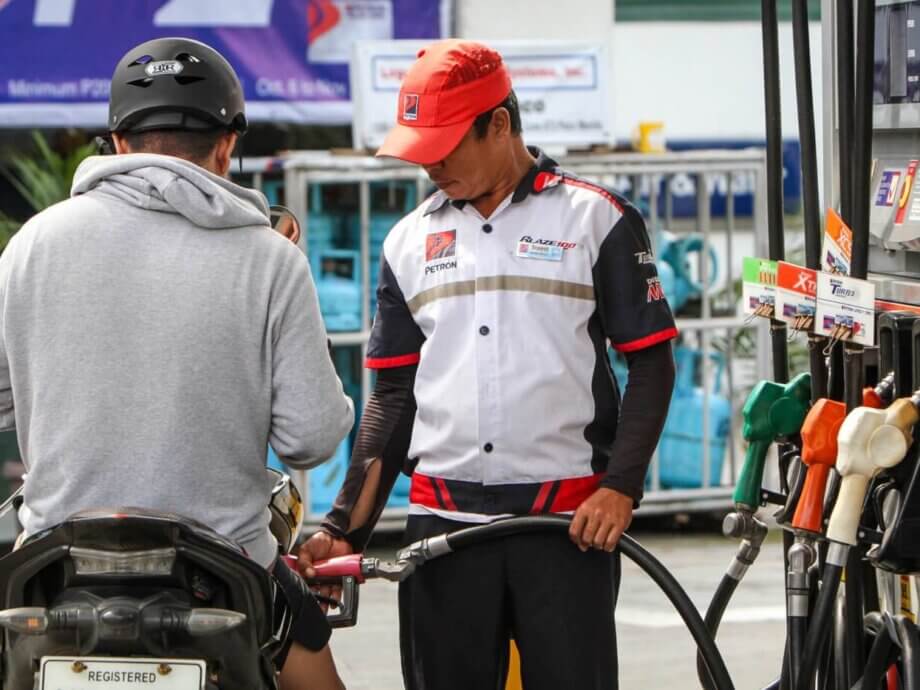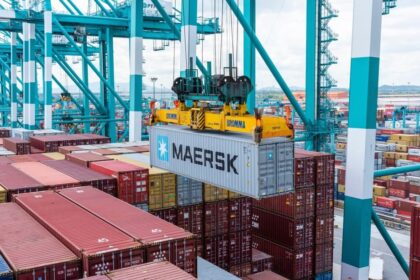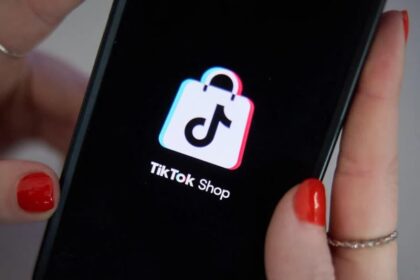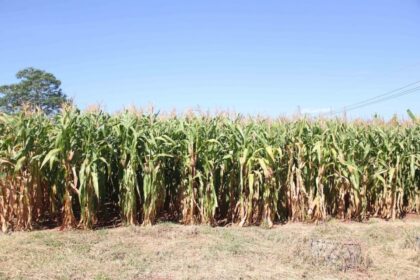Philippines Braces for Oil Price Shocks as Middle East Conflict Escalates
The Philippine government is moving swiftly to prepare a fuel subsidy program for motorists, public transport operators, farmers, and fisherfolk as tensions in the Middle East threaten to drive up global oil prices. With the conflict between Israel and Iran raising fears of supply disruptions, officials are finalizing guidelines to ensure timely and efficient distribution of aid to those most affected by potential price hikes.
- Philippines Braces for Oil Price Shocks as Middle East Conflict Escalates
- Why the Middle East Conflict Matters for Philippine Fuel Prices
- How the Fuel Subsidy Program Works
- Who Will Benefit—and How Much?
- Broader Economic Impacts: Inflation, Logistics, and the Peso
- Government Strategies: Short-Term Relief and Long-Term Resilience
- Other Sectors Affected: Fertilizer and Food Security
- Protecting Overseas Filipino Workers
- What Happens Next?
- In Summary
President Ferdinand Marcos Jr. and his economic team have been closely monitoring the situation, recognizing the country’s vulnerability as a major oil importer. The government’s response aims to cushion the impact on commuters, transport workers, and the broader economy, while also considering long-term strategies for energy security.
Why the Middle East Conflict Matters for Philippine Fuel Prices
The Middle East is a critical source of crude oil for the Philippines and much of the world. The Strait of Hormuz, a narrow waterway between Iran and Oman, is especially vital—it handles about one-third of global seaborne oil trade and around 20% of liquefied natural gas shipments. Any disruption in this region, such as a blockade or military escalation, can send shockwaves through international energy markets.
Recent hostilities between Israel and Iran have heightened these risks. After Israeli airstrikes on Iranian military and nuclear sites, Iran retaliated, raising fears that the conflict could spill over and threaten oil shipments. President Marcos has acknowledged the seriousness of the situation, noting that if the Strait of Hormuz were blocked, oil prices would “certainly be affected.”
Oil prices have already shown volatility, with Brent crude briefly spiking to $79 per barrel before stabilizing after a ceasefire announcement. However, the threat of renewed conflict keeps markets on edge, and the Philippine government is preparing for the possibility of further price surges.
How the Fuel Subsidy Program Works
The government has earmarked a total of P2.5 billion for fuel subsidies under the 2025 General Appropriations Act, with an additional P617 million available from the 2024 budget. The program is designed to support:
- Public utility vehicle (PUV) drivers and operators, including jeepneys, buses, taxis, and ride-hailing services
- Tricycle drivers
- Delivery platform drivers
- Farmers and fisherfolk, with a separate allocation of P150 million (P75 million each for agriculture and fisheries)
Distribution will be handled through multiple channels to ensure speed and efficiency. These include the existing Pantawid Pasada fuel cards, registered e-wallets (such as GCash and Maya), bank-to-bank transfers, and cash distribution via the Land Bank of the Philippines. The Department of Transportation (DOTr) and the Land Transportation Franchising and Regulatory Board (LTFRB) are finalizing the list of eligible beneficiaries, which will be verified and certified at the regional level.
Trigger for Subsidy Release: The $80 Per Barrel Threshold
Under current guidelines, the fuel subsidy will be released once the average global crude oil price breaches $80 per barrel. As of mid-June, prices hovered around $73–$79 per barrel, just below the trigger point. The government is monitoring prices daily and stands ready to activate the program if the threshold is crossed.
Transportation Secretary Vince Dizon emphasized the government’s readiness: “The Marcos administration is fully prepared to implement the Fuel Subsidy Program for the public transport sector, in accordance with the 2025 General Appropriations Act.”
Who Will Benefit—and How Much?
The fuel subsidy program is expected to benefit over 1.1 million individuals, including:
- 258,712 PUV operators and drivers
- 723,695 tricycle drivers
- 150,000 ride-hailing application drivers
For farmers and fisherfolk, the government has set aside P600 million, though the exact amount each beneficiary will receive is still being determined. The goal is to provide targeted relief to those most vulnerable to fuel price shocks, helping them maintain their livelihoods and keep transportation and food supply chains running.
Ensuring No Fare Hikes for Commuters
To protect commuters from immediate fare increases, the LTFRB has been instructed not to approve any fare hikes while the subsidy program is being prepared. Transportation Assistant Secretary Mon Ilagan explained that this measure is intended to “prioritize the release of the fuel subsidy” and prevent additional burdens on the riding public.
Broader Economic Impacts: Inflation, Logistics, and the Peso
Rising fuel prices have a domino effect on the Philippine economy. Higher transportation costs can lead to increased prices for goods and services, stoking inflation. The logistics sector, which relies heavily on fuel, is particularly sensitive to price swings. Palace Press Officer Claire Castro warned that even with subsidies, “the impact will also be felt in logistics and trading.”
Another concern is the weakening of the Philippine peso against the US dollar, which can further amplify the cost of imported oil. Recent weeks have seen the peso fall to P57.45 per dollar, contributing an estimated P0.75 per liter to fuel price increases. This currency depreciation, combined with global oil market volatility, poses a significant challenge for policymakers.
Government Strategies: Short-Term Relief and Long-Term Resilience
While fuel subsidies offer immediate relief, experts and officials agree that the Philippines must pursue long-term solutions to reduce its vulnerability to external shocks. The Department of Energy (DOE) has required oil companies to maintain a 30-day inventory of fuel to help stabilize local supply. The DOE is also negotiating with oil firms to stagger price hikes, easing the burden on consumers by spreading increases over multiple tranches.
Calls for Energy Diversification
Economists and energy analysts are urging the government to accelerate the transition to renewable energy, electric vehicles, and other alternatives to imported oil. As one analyst noted, “Periodic crises in the Middle East should compel government to expedite the transition to electric or hybrid vehicles in order to protect the public from the acute but severe impact of regional tensions.”
Investments in renewables, liquefied natural gas infrastructure, and energy efficiency are seen as essential for building long-term resilience. The current crisis is a reminder that energy security is not just an economic issue, but a strategic imperative for the country.
Other Sectors Affected: Fertilizer and Food Security
The impact of the Middle East conflict extends beyond fuel. The Philippines imports a significant portion of its nitrogen-based fertilizer from the region, particularly Qatar. Disruptions in supply could affect local agriculture and food prices. The Department of Agriculture is exploring alternative sources, such as Brunei, to mitigate potential shortages.
Officials believe that as long as key sea lanes remain open, the risk of a prolonged fertilizer shortage is low. However, the situation is being closely monitored, and contingency plans are in place.
Protecting Overseas Filipino Workers
The government is also monitoring the safety of Filipinos in Israel and Iran, where around 30,000 and 1,200 Filipinos reside, respectively. While there is no mandatory repatriation order at this time, voluntary evacuation is being facilitated for those who wish to return home. Migrant Workers Secretary Hans Leo Cacdac has been dispatched to Jordan to coordinate evacuation efforts.
What Happens Next?
President Marcos has convened his economic team to assess the evolving situation and determine the appropriate timing for subsidy release. The government is prepared to act quickly if global oil prices breach the $80 per barrel threshold or if local pump prices rise sharply. Coordination among the DOTr, DOE, Department of Agriculture, and other agencies is ongoing to ensure a smooth rollout of assistance.
Meanwhile, fuel retailers have agreed to implement price hikes in two tranches to soften the blow for consumers. Discounts for public utility vehicles are being offered at select gas stations, and the DOE is monitoring for any unjustified price increases or “price gouging.”
In Summary
- The Philippine government is preparing a P2.5 billion fuel subsidy program for motorists, public transport operators, farmers, and fisherfolk in response to potential oil price hikes from the Middle East conflict.
- The subsidy will be triggered if global crude oil prices exceed $80 per barrel, with over 1.1 million beneficiaries expected.
- Distribution will use fuel cards, e-wallets, bank transfers, and cash, with strict verification to ensure aid reaches those most in need.
- Officials are working to prevent fare hikes for commuters and to stagger fuel price increases to ease the burden on consumers.
- The government is also monitoring the impact on fertilizer imports, food security, and the safety of overseas Filipino workers in affected regions.
- Experts urge the Philippines to accelerate energy diversification and reduce reliance on imported oil for long-term resilience.
- President Marcos and his economic team are closely watching global developments and stand ready to activate the subsidy program as needed.












